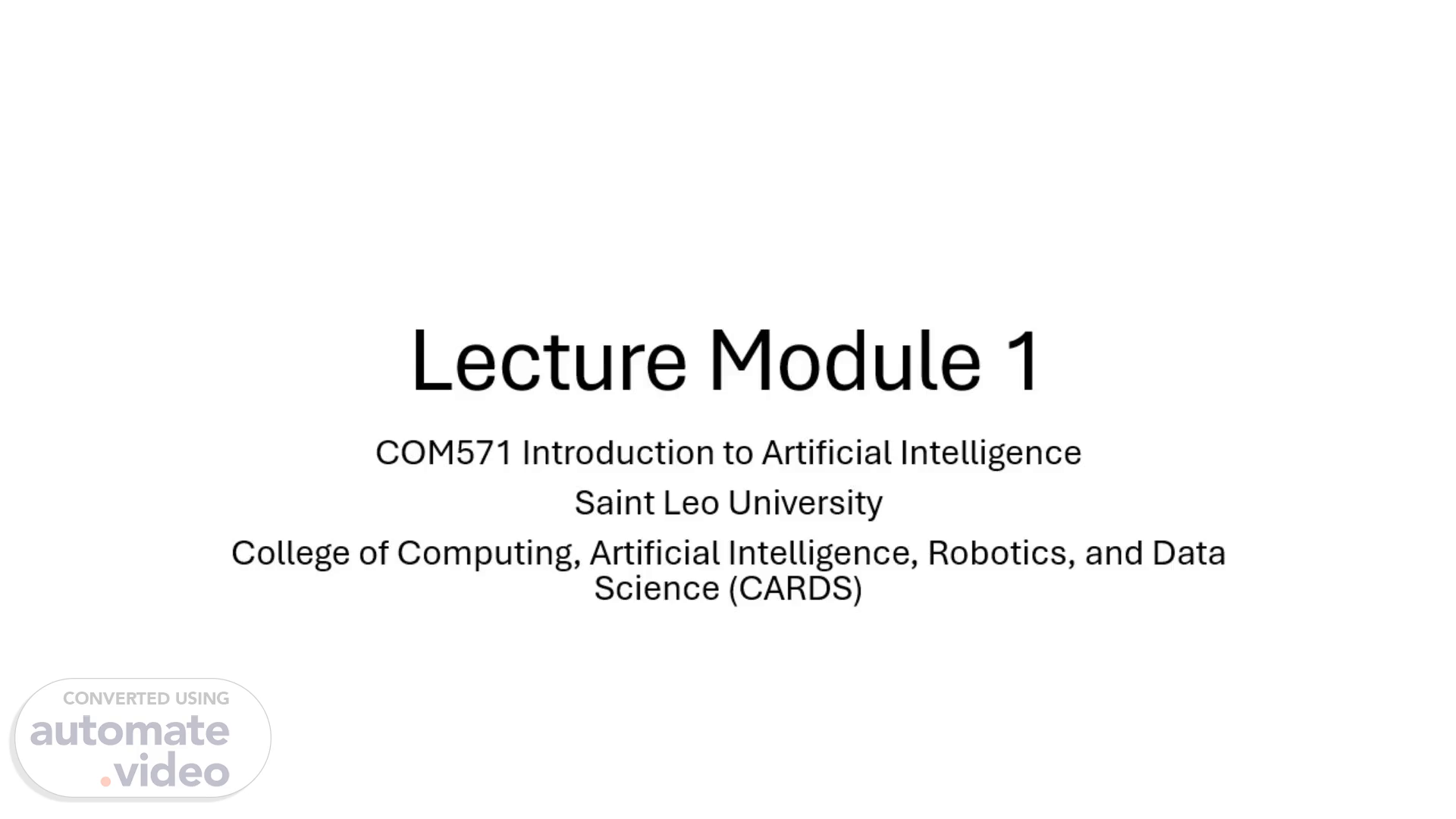Scene 1 (0s)
[Virtual Presenter] Welcome to the lecture of Module 1 of the Introduction to Artificial Intelligence course..
Scene 2 (10s)
[Audio] Demonstrate a fundamental understanding of the history of artificial intelligence (AI) and its foundations..
Scene 3 (19s)
[Audio] What is Artificial Intelligence? History of Artificial Intelligence Agents Situated in Environments Designing Intelligent Agents Prototypical Applications.
Scene 4 (28s)
[Audio] Artificial intelligence (AI) is a broad field of science and technology that involves building machines and computers to perform tasks that typically require human intelligence..
Scene 5 (47s)
[Audio] An AI agent is a software program that uses artificial intelligence (AI) to perform tasks without human intervention. AI agents use machine learning and natural language processing (NLP) to understand and respond to user inputs. They can also use large language models (LLMs) to comprehend and respond to user inputs. AI agents can be used in many applications, including Contact centers, Software design, IT automation, Code-generation tools, and Conversational assistants..
Scene 6 (1m 21s)
[Audio] In the context of Artificial Intelligence, "dimensions of complexity" refer to different aspects or factors that contribute to the overall complexity of an AI system, often including elements like the number of agents involved, the level of uncertainty in the environment, the type of data being processed, the complexity of the task, and the dynamic nature of the situation, allowing researchers to analyze and categorize AI problems based on their varying levels of difficulty across these dimensions..
Scene 7 (1m 53s)
[Audio] This lecture discussed the importance of representations in solving problems, defining solutions, quality of solutions, decision-making, representation languages, physical symbol systems, knowledge levels, and reasoning in artificial intelligence..
